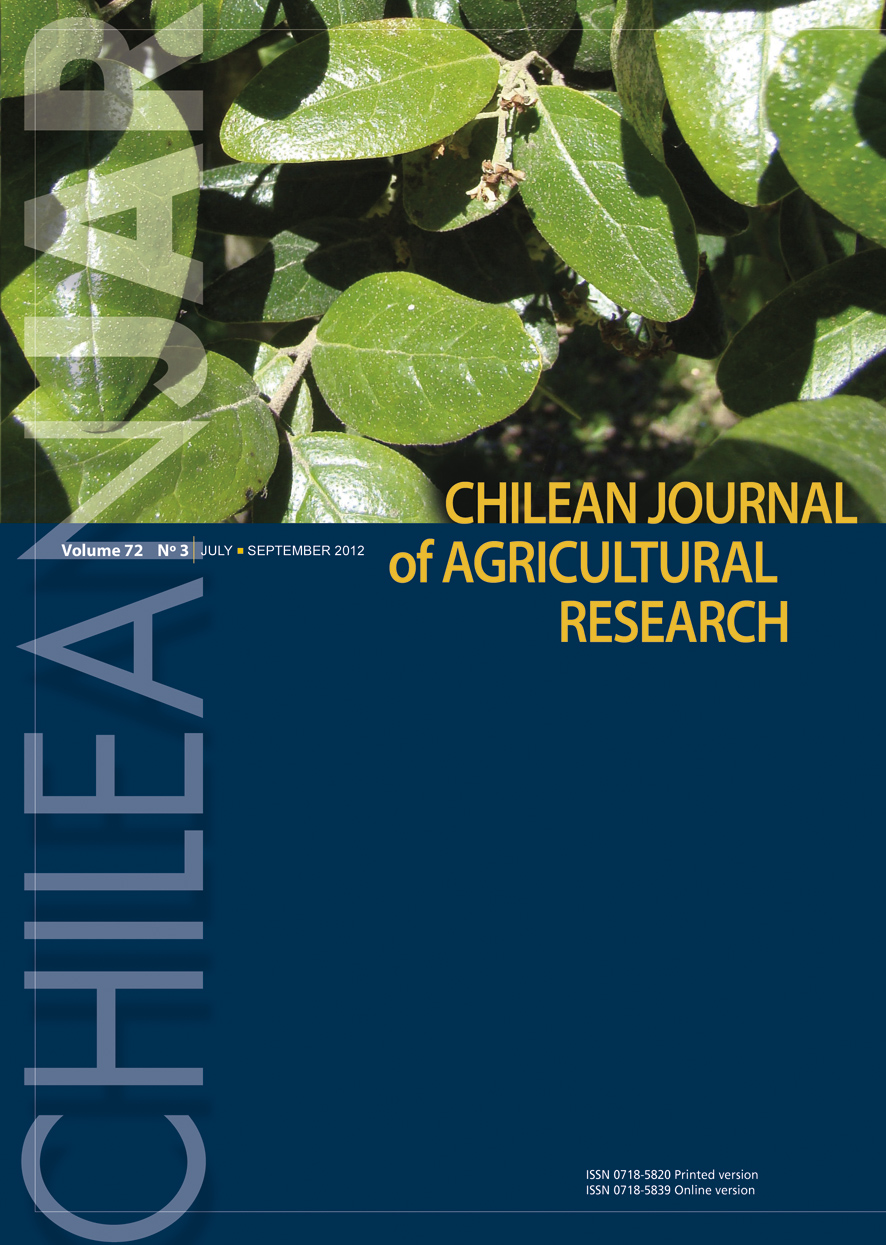
|
Chilean Journal of Agricultural Research
Instituto de Investigaciones Agropecuarias, INIA
ISSN: 0718-5820
EISSN: 0718-5820
Vol. 71, No. 2, 2011, pp. 329-332
|
 Bioline Code: cj11039
Bioline Code: cj11039
Full paper language: English
Document type: Note
Document available free of charge
|
|
|
Chilean Journal of Agricultural Research, Vol. 71, No. 2, 2011, pp. 329-332
| en |
Millán-INIA, New Variety Of High Quality Early Spring Bread Wheat For Irrigated Soils In Central-Southern Chile
Matus, Iván; Madariaga, Ricardo; Jobet, Claudio; Zúñiga, Javier & Alfaro, Christian
Abstract
Millán-INIA is a variety of spring bread wheat ( Triticum aestivum

L.) originating from a cross carried out in the Wheat Plant Breeding Project of the Instituto de Investigaciones Agropecuarias (INIA), in the Centro Regional de Investigación Quilamapu in 1995. This is a spring wheat variety with an early to medium-early head emergence and upright growth habit in the seedling stage. The adult plant is low to medium height and varies between 75 and 90 cm, with a mean of 85 cm. The spike is white with long awns along its full length. The grain is large-sized, white, and vitreous. The weight of 1000 grains varies between 50 and 59 g. It was sown in mid-August at the Santa Rosa Experimental Station (36°31’ S; 71°54’ W), Chillán. Head emergence occurred 88 to 89 d after sowing, which is 2 to 3 d after Ciko-INIA. On average, Millán-INIA reached a yield similar to that of the var. Ciko-INIA. This line stands out for its good resistance to disease, high protein content (11.5% mean), high sedimentation value, and high W value.
Spring wheat, Triticum aestivum, new variety, Millán-INIA
|
| |
| es |
Millán-INIA, nueva variedad de trigo harinero precoz de primavera de alta calidad para suelos de riego de la zona centro sur de Chile
Matus, Iván; Madariaga, Ricardo; Jobet, Claudio; Zúñiga, Javier & Alfaro, Christian
Resumen
Millán-INIA es un trigo harinero ( Triticum aestivum

L.) de primaveraque proviene de un cruzamiento efectuado en 1995 en el Proyecto de Fitomejoramiento de Trigo del Instituto de Investigaciones Agropecuarias INIA, en el Centro Regional de Investigación Quilamapu. Es un trigo de hábito primaveral, de época de espigadura mediana a precoz, con hábito de crecimiento erecto al estado de plántula. La altura de la planta adulta se considera mediana a baja, y varía entre 75 y 90 cm, con un promediode 85 cm. La espiga es de color blanco y de barbas largas y presentes en toda su extensión. El grano es de color blanco y aspecto vítreo y de tamaño grande, con un peso de los 1000 granos que varía entre 50 y 59 g. Sembrado a mediados de agosto en el Campo Experimental Santa Rosa (36°31’ S; 71°54’ O), Chillán, la emisión de espigas ocurre 88 a 89 días después de la siembra, entre 2 y 3 días después que Ciko-INIA. Como promedio en las localidades evaluadas, Millán-INIA tuvo un rendimiento medio similar a la var. Ciko-INIA. Esta línea se destaca por su muy buena resistencia a enfermedades, alto contenido de proteína (promedio 11,5%), alto valor de sedimentación, y alto valor W.
trigo de primavera, Triticum aestivum, nueva variedad, Millán-INIA
|
| |
© Copyright 2010 Chilean Journal of Agricultural Research.
Alternative site location: http://www.inia.cl
|
|
